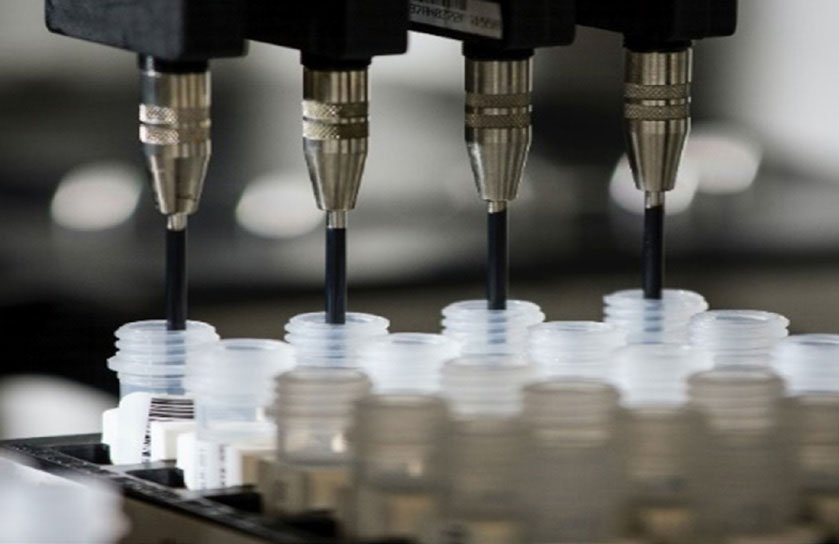Providing genomic solutions inside the farm gate
NEOGEN’s solutions can be found at every step of the food chain, around the world. They provide the most comprehensive range of solutions for the food processing, animal protein and agriculture industries, not only protecting the world’s food supply, but also allowing you to produce more efficiently and effectively than you could before.
All Highland Cattle samples requiring parentage testing should be sent to the Highland Cattle Breed Secretary together with the DNA sample submission form. These will then be forwarded to the Neogen Genomics European laboratory for processing.
-
Testing will give you the information you need to make the best decisions for your herd. Results from Neogen’s testing options allow you to make educated breeding decisions, from improving the efficiencies of your herd to verifying parentage and identifying bacterial strains associated with disease outbreaks.
-
Neogen has six laboratories located around the world to place its facilities close to its customer base in Europe (Scotland), the USA, Brazil, China, Canada and Australia. These labs are fully integrated and work together every day. This footprint across the world means that the capacity is greater than any other DNA testing service provider and ensures rapid and consistent turnaround times in both processing and reporting.
-
You can choose solutions from their extensive testing portfolio to make profitable choices about your animals.
Services include:
• DNA screening for parentage, Igenity® Beef commercial traits, genetic recessives and causative mutations such as Myostatin and coat colour
• Genotyping to determine genetic merit and genomic breeding values
Parentage testing
As breeders, a key requirement in today’s markets is parentage verification, not only for pedigree registrations but also for traceability. There are two types of DNA profile used for parentage testing:
Microsatellites (sometimes known as STR)
SNPs (Single Nucleotide Polymorphisms)
Microsatellites have been used for DNA parentage verification since the 1990s. They consist of a small panel of approximately 15-20 repetitive DNA markers sometimes known as Short Tandem Repeats (STR). This small DNA profile is only useful for parentage verification.
This technology has recently been superseded by SNP technology. With the advent of SNP chips, it is now possible to test tens of thousands of SNP markers simultaneously on any individual animal.
Using Neogen’s range of GeneSeek® Genomic Profiler™️(GGP) SNP chips, these much larger SNP profiles can simultaneously be used for both genomic evaluation and for SNP parentage verification.
The Highland Cattle Society’s database has many historical sires with STR profiles and one of the issues with starting to use SNP profiles for parentage testing is that they are not ‘backwards compatible’ with the old STR. Therefore, it is necessary to transition the database from the old STR technology to the new SNP technology.
This can be done using a few different approaches. If a sire or dam only has an historic STR profile available, then a combination of SNP and STR profiles can be utilised to carry out verification.
Neogen can either create a SNP profile on a parent if a new sample can be provided or, if a new sample cannot be provided, Neogen can provide an STR profile as well as a SNP profile on the offspring to enable accurate verification.
Parentage verification
One-way comparison vs the trio test
Parent Verification is a process which utilises DNA markers to exclude incorrect parent(s). Neogen utilises more than 200 SNP markers for parentage profiles.
The first instance where parentage is carried out is usually a simple sire/calf or dam/calf one-way comparison. At each location in the genome the calf has two copies of a gene. One from their sire and the other from their dam.
So, with the example below (table 1), we can confirm that Sire B and C both ‘qualify’ to the calf without consideration of the dam, but sire A is excluded at SNP 3 and 5.
Table 1 - one-way comparison
Once we factor in the Dam (table 2), Sire C excludes at SNP 2 since the dam only has ‘A’ allele to contribute to the progeny, which means the sire would need to provide the G. When the calf is compared to sire and dam, it leaves Sire B as the only qualifying sire. Using the Sire and Dam to verify a calf’s parentage is known as a trio test.
Table 2 - trio test
Neogen refer to this process as parent verification, as they verify that the parents provided are possible ancestors of the calf.




